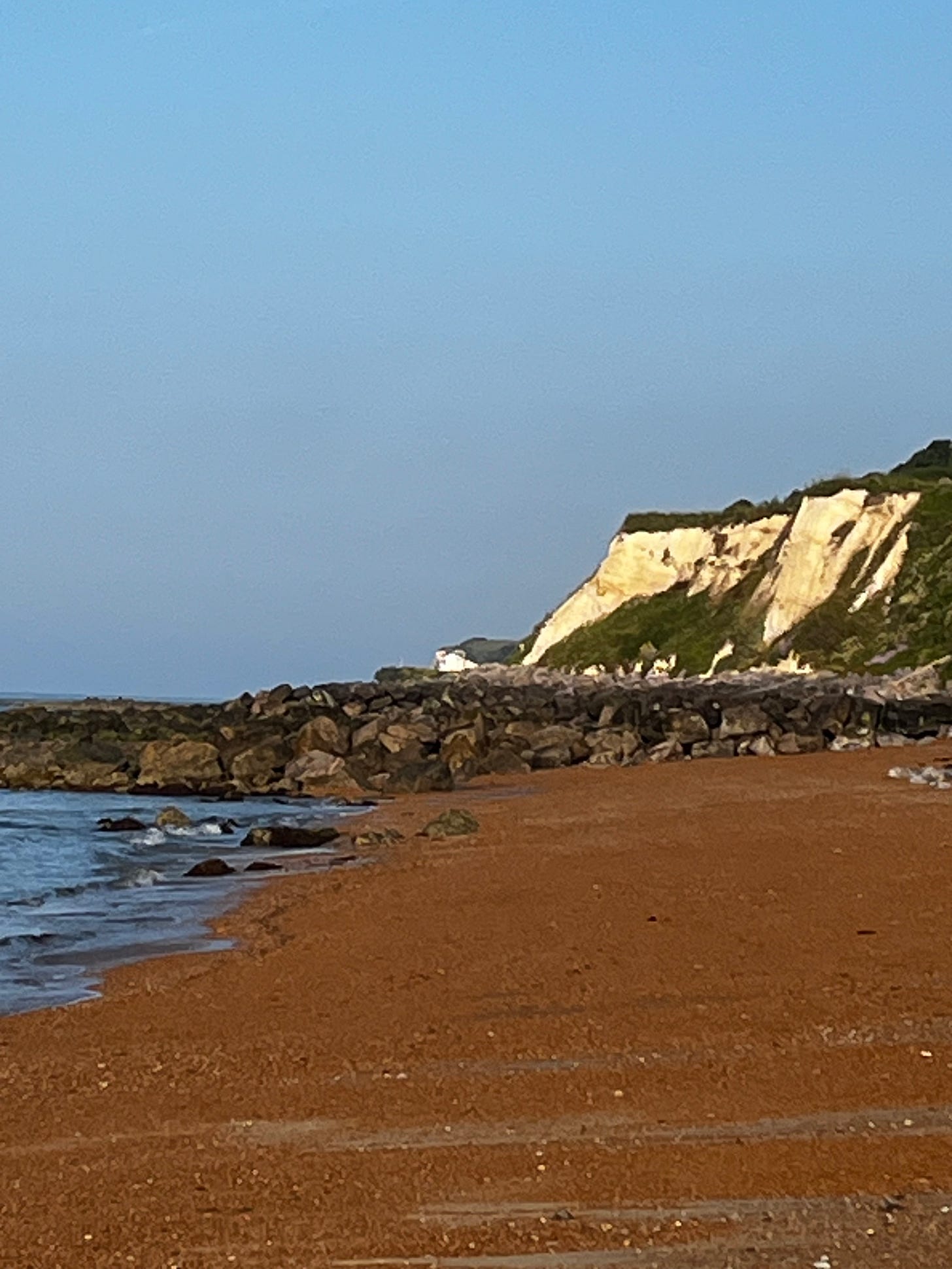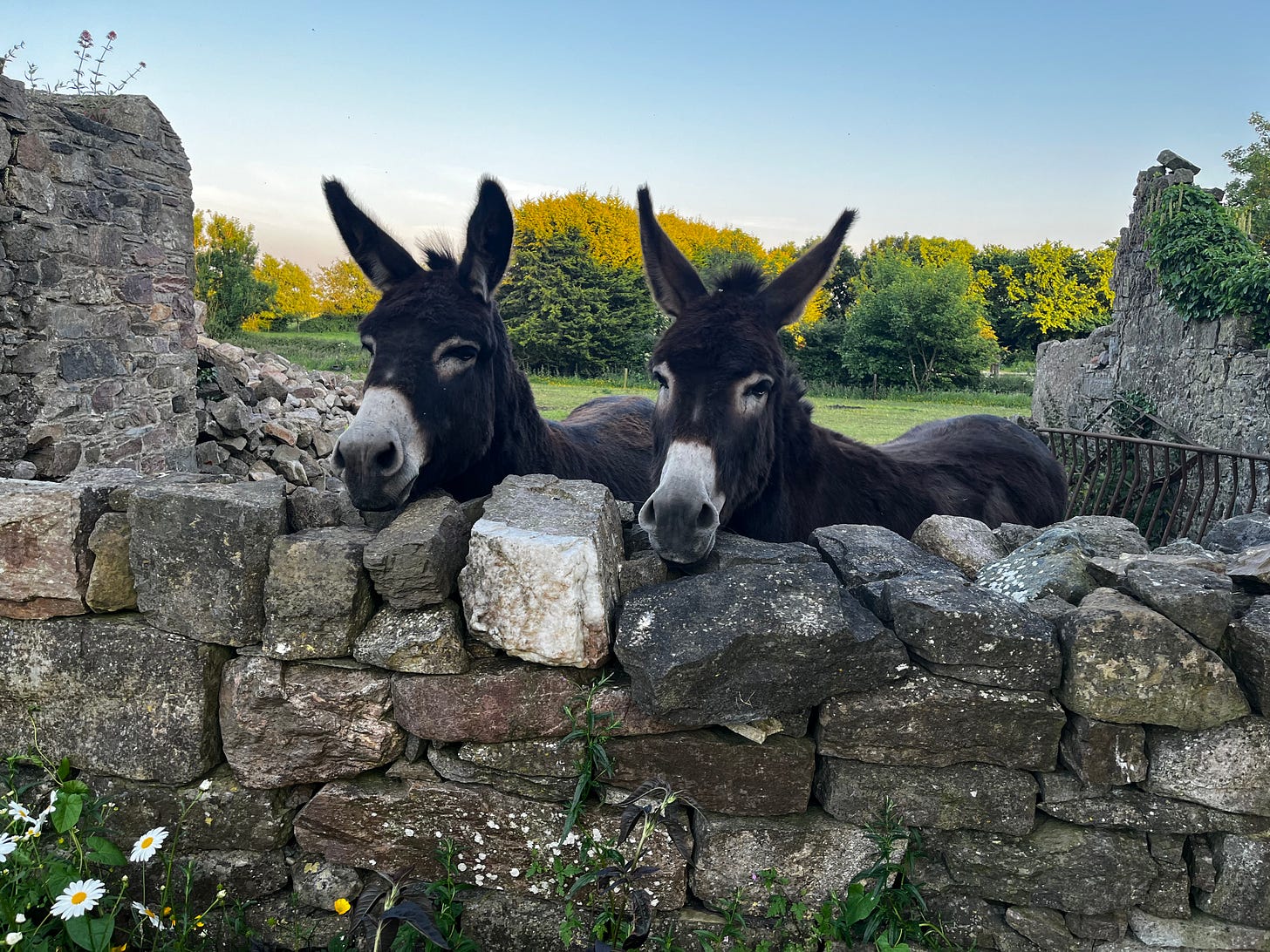Traveled to Ireland, Wales, and England recently. For personal reasons, the trip had always been one I wanted to take, albeit also to share with my wife. But honestly, in many ways, this was unmistakably my trip. That is not to say the travel was not wonderful and meaningful for each of us in different ways, and certainly in some shared, but there were deep ancestral links for me.
Certainly I discovered and found evidence of those links in many ways in our travels from Dublin to the Wicklow Mountains to County Wexford to Rosslare and Kinsale, then to Laugharne in Wales, the Isle of Wight and London. But I was reminded also of the true and deepest reason I travel.
It is to search and find the thin places.
It’s been said that travel, like our lives, is best understood backward and experienced forward. This is what Kierkegaard reminds us, words that have been written in many variations in travel, philosophical, and contemplative writing for decades. Why? Because it is true. And with the looking back and looking forward in terms of my own travel, I have come to realize that I am drawn to the landscapes, the natural spaces and the manmade ones that capture and envelope me with blissful moments, embrace and hypnotize me into wonder.
These are the thin places.
The only origin I can find for the term is from the pagan folklore of the Celts who used the phrase to describe divine places—rocky cliffs at oceanside, vast mountains and valleys, sweeping vistas, sacred venues. These are the places where two worlds are fused—the world we know and the mystery of another, the otherworld, a place where there is only a “thin” membrane between the two, where the five senses accept the experience if being there, but where yet another sense, one we will never fully understand, is ignited, allowing us to be in the presence of something mystical, something beyond, something magical.
How do we know when we are in a thin place.”
It comes in a sweeping wave. There is no doubt. No ambiguity. No analysis. No thought. It’s the purest of emotion, encompassing all of you, every nerve and synapse. Sometimes you may seek out a thin place, knowing where you want to go, a place that others have also found to be “thin.” Still, there are the thin places that are pure surprises, discoveries full of awe.
Thin places were found in Howth, north of Dublin, a sea village where the poet W.B. Yeats once lived when he was discovering his creative life.
There was Glendalough, a majestic valley in the Wicklow Mountains containing two pristine lakes and the ruins of an ancient monastic city founded by St. Kevin.
The donkey pen at Killiane Castle where we stayed south of Wexford was the definition of an unexpected thin place. The animals almost appeared sacred, welcoming us to their home in a most gentle way.
Dylan Thomas’ writing shed and his grave at St. Martin’s in Laugharne, Wales were the focus of a man’s pilgrimage. I was given the gift of sitting in his chair at his desk and was in the graveyard on an early morning alone with his ghost.
And on the Isle of Wight, the sea cliffs at Steephill Cove mesmerized. We walked six miles along this stretch of coast. And then later, came to the house in Ryde, the island’s largest village where my grandfather was born, his home still standing after more than 100 years. Another pilgrimage.
All, each for different reasons, were my thin places.
Jordan Kisner, the author of Thin Places: Essays from In Between writes how “certain inviolable boundaries” can “collide and reveal something” that we may not fully understand. A thin place, he says, is “the barrier between the physical world and the spiritual world” where it becomes “porous,” a location where “you might poke a hole through to another reality,” a kind of skywalk to another realm of resounding emotional power.
Exactly what I had experienced.
I am always longing, searching for those thin places, where the soul is awakened to the remarkable. It may be a spiritual thing, or simply an aspect of wonder, but whatever it is, whatever it symbolizes or proves, is not entirely the point. Thin places are in essence about the concept of arriving, about the beatific moment when we come upon a little piece of heaven. In the movie Field of Dreams, the ghost of Ray Kinsella’s father asks, “Is this heaven?” and his son answers, “It’s Iowa.” In that scene, in that remote cornfield in rural America, a thin place was born, a special divine awakening for a father and son. Heaven? Where is it? It can be found right where you are, or, as it was for me, found in the days along the rugged coasts of the British Isles.










I've never called them "thin places" but I do recognize them. I've called them the places of transformation (i.e. the traveler's transformation) where "the possibility of knowing beyond the realm we live in everyday" (from "Now, a book of moments", by Dami Roelse). "Heights are about the impossible, the dream, moments of stepping across boundaries." David we are kindred spirits. Thank you for this piece and a new word for my vocabulary.
Every photo captures the metaphysical reality. That is a majestic feat all its own! The donkeys are sages. Thank you for sharing.